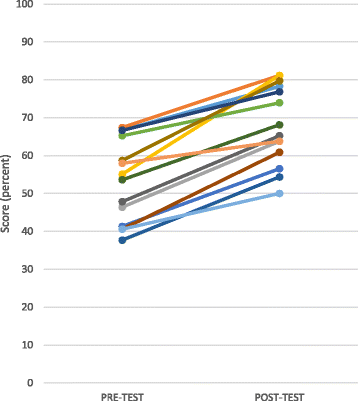Addressing the immediate need for emergency providers in resource-limited settings: the model of a six-month emergency medicine curriculum in Haiti
- PMID: 29626265
- PMCID: PMC5889369
- DOI: 10.1186/s12245-018-0182-y
Addressing the immediate need for emergency providers in resource-limited settings: the model of a six-month emergency medicine curriculum in Haiti
Abstract
Background: In many resource-limited settings, emergency medicine (EM) is underdeveloped and formal EM training limited. Residencies and fellowships are an ideal long-term solution but cannot meet immediate needs for emergency providers, while short-term programs are often too limited in content. We describe a third method successfully implemented in Haiti: a medium-duration certificate program to meet the immediate need for emergency specialists.
Methods: In conjunction with the Haitian Ministry of Health and National Medical School, we developed and implemented a novel, 6-month EM certificate program to build human resources for health and emergency care capacity. The program consisted of didactic and supervised clinical components, covering core content in EM. Didactics included lectures, simulations, hands-on skill-sessions, and journal clubs. Supervised clinical time reinforced concepts and taught an EM approach to patient care.
Results: Fourteen physicians from around Haiti successfully completed the program; all improved from their pre-test to post-test. At the end of the program and 9-month post-program evaluations, participants rated the program highly, and most felt they used their new knowledge daily. Participants found clinical supervision and simulation particularly useful. Key components to our program's success included collaboration with the Ministry of Health and National Medical School, supervised clinical time, and the continual presence of a course director. The program could be improved by a more flexible curriculum and by grouping participants by baseline knowledge levels.
Conclusion: Medium-duration certificate programs offer a viable option for addressing immediate human resource gaps in emergency care, and our program offers a model for implementation in resource-limited settings. Similar options should be considered for other emerging specialties in resource-limited settings.
Keywords: Education; Emergency care; Emergency medicine; Emergency providers; Haiti; Resource-limited; Training.
Conflict of interest statement
Ethics approval and consent to participate
This paper describes the implementation of an educational program to improve the quality of emergency care and was for quality improvement purposes only. It was not a research study requiring ethical approval.
Consent for publication
Not application
Competing interests
The authors declare that they have no competing interests.
Figures
References
-
- Calvello E, Reynolds T, Hirshon JM, Buckle C, Moresky R, O’Neill J, et al. Emergency care in sub-Saharan Africa: results of a consensus conference. Afr J Emerg Med. 2013;3(1):42–48. doi: 10.1016/j.afjem.2013.01.001. - DOI
-
- Kobusingye OC, Hyder AA, Bishai D, Joshipura M, Hicks ER, Mock C. Emergency medical services, Disease control priorities in developing countries [Internet]. 2nd ed: Oxford University Press; 2006. Available from: http://www.ncbi.nlm.nih.gov/books/NBK11744/. Cited 17 Dec 2013
-
- World Health Organization. Global status report on noncommunicable diseases 2014. 2014. Available from: http://apps.who.int/iris/bitstream/10665/148114/1/9789241564854_eng.pdf?.... Accessed 23 Oct 2017.
LinkOut - more resources
Full Text Sources
Other Literature Sources


